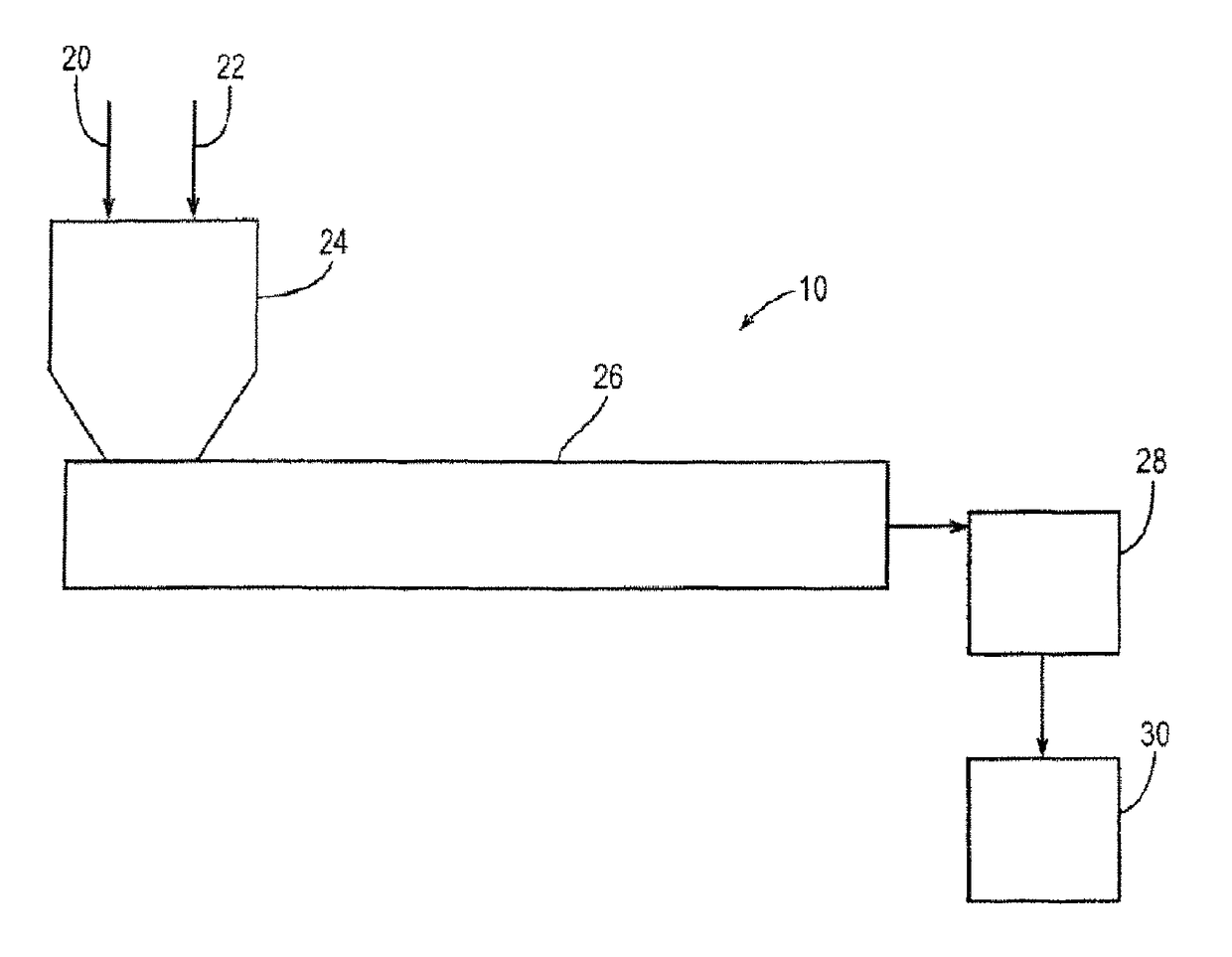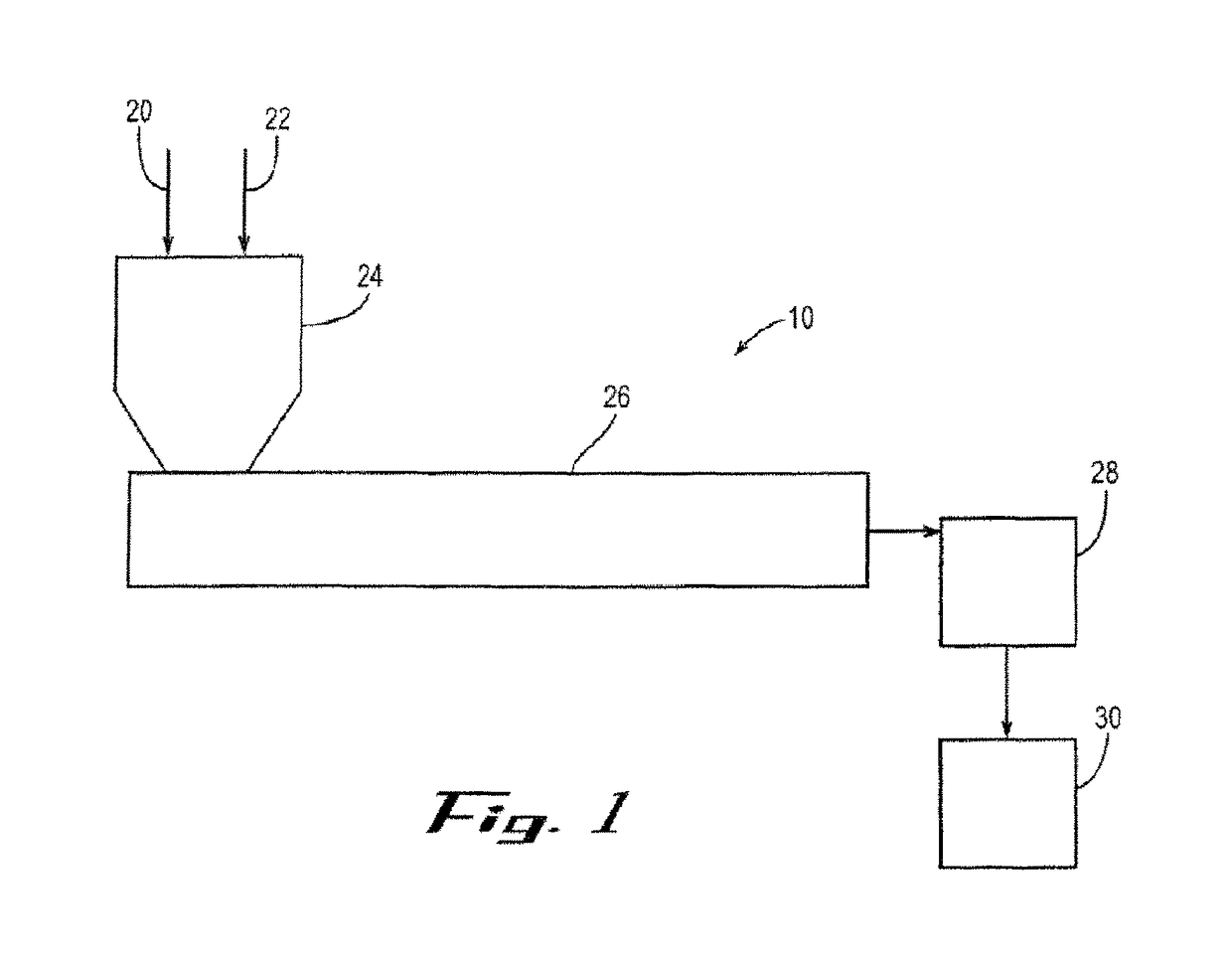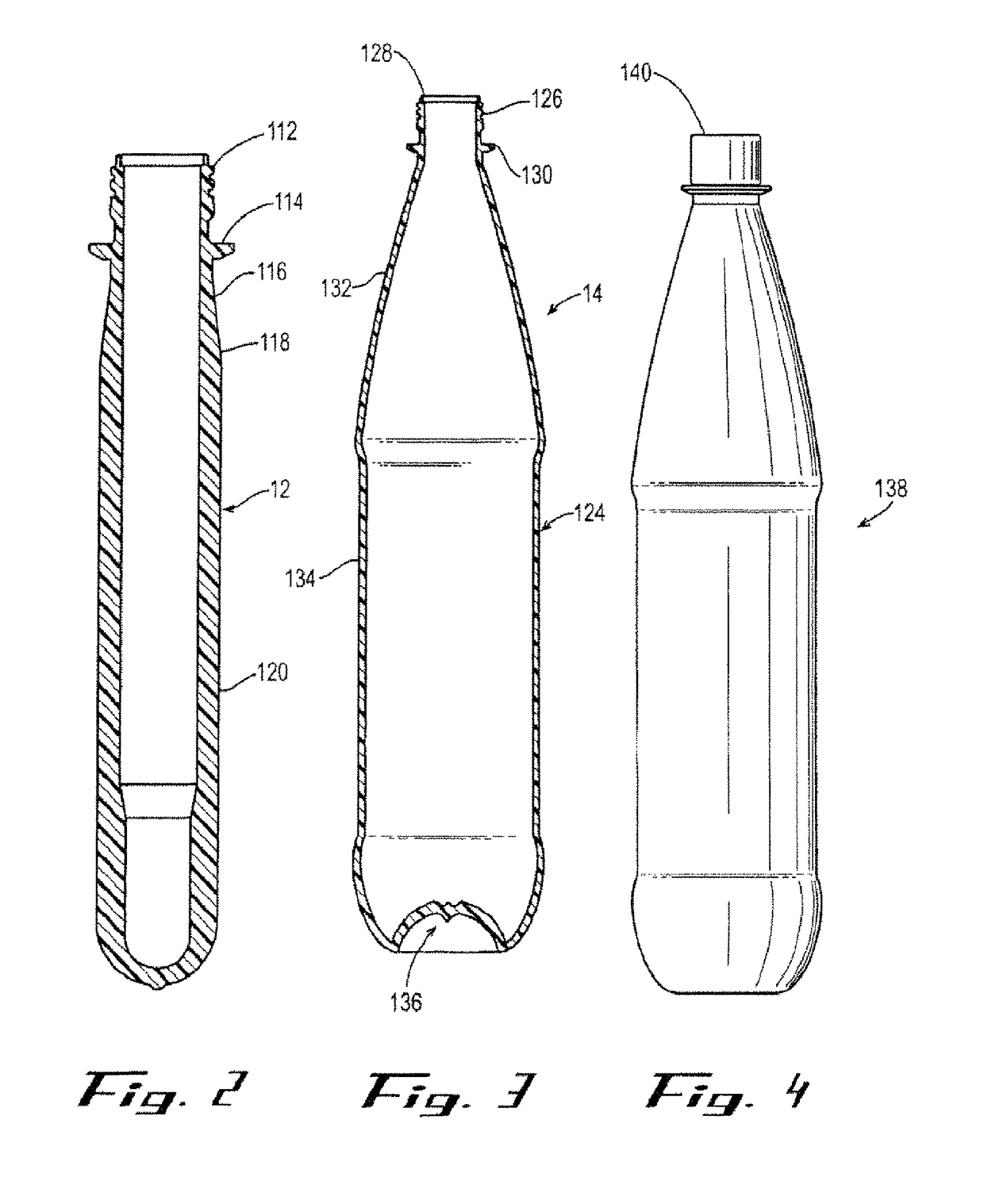Gas barrier enhancing additives and methods
a technology of additives and additives, applied in the field of polypropylene containers, can solve the problems of limiting the use of smaller pet containers for packaging carbonated soft drinks, increasing the relative loss rate, and adding considerable expense to the manufacturing process, so as to achieve the effect of enhancing the gas barrier
- Summary
- Abstract
- Description
- Claims
- Application Information
AI Technical Summary
Benefits of technology
Problems solved by technology
Method used
Image
Examples
example 1
General Preparation of (Alkanediyl)bis[theophylline]
[0372]A 1 mmol / 10 mL concentration solution of theophylline in anhydrous dimethylformamide (DMF) was prepared under an inert gas atmosphere and dry conditions. For one equivalent of theophylline, an equimolar amount of sodium hydride was carefully added to the solution, followed by one half an equivalent of dibromoalkane. The dibromoalkanes included dibromopropane, dibromobutane, and dibromooctane.
[0373]The mixture was stirred at ambient temperature (˜22° C.) for 15 hours, then heated and stirred at 70° C. for three hours. The progress of the reactions was monitored using thin-layer chromatography (TLC), by confirming the consumption of the starting materials. The resulting mixture was poured into water to produce a solid mass of the product compound. The product was further purified by column chromatography, which yielded a pure, white, amorphous compound.
example 2 preparation
of MU2951-12
[0374]Formula C16H18N8O4, molecular weight: 386.4, Standard name: 7-[4-(1,3-dimethyl-2,6-dioxide-2,3,6,7-4H-1H-purine-7-yl)ethyl]-1,3-dimethyl-2,3,6,7-4H-1H-purine-2,6-dione:
[0375]
[0376]Procedure 1:
[0377]72 g theophylline (400 mmol), 0.16 g KI and 360 ml pure water were added sequentially to a 1000 ml four mouth flask. The mixture was stirred and heated to 50° C. and incubated for 60 minutes. The pH of the mixture was then adjusted to 14 with a 30% liquid alkaline. After pH 14 was reached, the mixture was heated to 60° C. 19.8 g (200 mmol) of 1,2-dichloroethane was then added dropwise over a period of 3 hours and the mixture was incubated for 48 hours. The mixture was then filtered, washed with water and vacuum filtered to provide MU2951-12 (46.7 g dry weight, 60.4% yield).
[0378]Procedure 2:
[0379]72 g theophylline (400 mmol), 2.0 g KI and 500 ml DMF were added sequentially to a 1000 ml four mouth flask. The mixture was stirred and heated to 85° C. and incubated for 40 mi...
example 3
on of Compound 2
[0380]Formula C17H20N8O4, molecular weight: 400.4, Standard name: 7-[4-(1,3-dimethyl-2,6-dioxide-2,3,6,7-4H-1H-purine-7-yl)propyl]-1,3-dimethyl-2,3,6,7-4H-1H-purine-2,6-dione
[0381]
[0382]Procedure 1:
[0383]72 g theophylline (400 mmol), 0.16 g KI and 400 ml pure water were added sequentially to a 1000 ml four mouth flask. The mixture was stirred and heated to 50° C. and incubated for 60 minutes. The pH of the mixture was adjusted to 12 with a 30% liquid alkaline. Once the pH was adjusted, the mixture was heated to 60° C. 22.6 g (200 mmol) of 1,3-dichloropropane was added in one portion and the mixture was incubated for 48 hour at 60° C. The mixture was filtered, washed with water and filtrated to provide Compound 2 (50.9 g, dry weight 50.9 g, 63.6% yield).
[0384]Procedure 2:
[0385]72 g theophylline (400 mmol), 2.0 g KI and 900 ml DMF were added sequentially to a 2000 ml four mouth flask. The mixture was stirred and heated to 85° C. and incubated for 40 minutes. 69.1 g K2C...
PUM
| Property | Measurement | Unit |
|---|---|---|
| vapor pressure | aaaaa | aaaaa |
| temperatures | aaaaa | aaaaa |
| weight percent | aaaaa | aaaaa |
Abstract
Description
Claims
Application Information
 Login to View More
Login to View More - R&D
- Intellectual Property
- Life Sciences
- Materials
- Tech Scout
- Unparalleled Data Quality
- Higher Quality Content
- 60% Fewer Hallucinations
Browse by: Latest US Patents, China's latest patents, Technical Efficacy Thesaurus, Application Domain, Technology Topic, Popular Technical Reports.
© 2025 PatSnap. All rights reserved.Legal|Privacy policy|Modern Slavery Act Transparency Statement|Sitemap|About US| Contact US: help@patsnap.com



